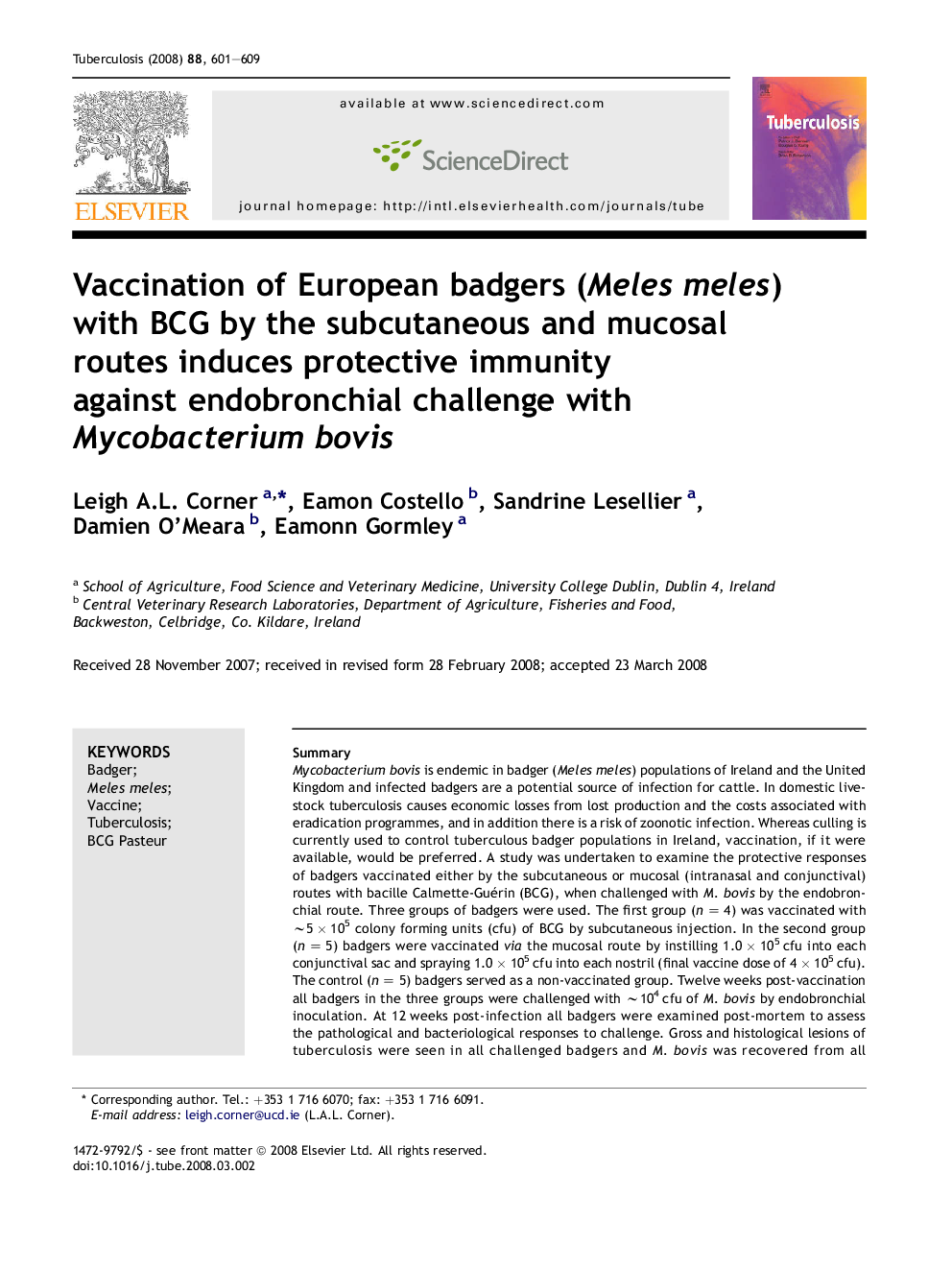| Article ID | Journal | Published Year | Pages | File Type |
|---|---|---|---|---|
| 2401799 | Tuberculosis | 2008 | 9 Pages |
SummaryMycobacterium bovis is endemic in badger (Meles meles) populations of Ireland and the United Kingdom and infected badgers are a potential source of infection for cattle. In domestic livestock tuberculosis causes economic losses from lost production and the costs associated with eradication programmes, and in addition there is a risk of zoonotic infection. Whereas culling is currently used to control tuberculous badger populations in Ireland, vaccination, if it were available, would be preferred. A study was undertaken to examine the protective responses of badgers vaccinated either by the subcutaneous or mucosal (intranasal and conjunctival) routes with bacille Calmette-Guérin (BCG), when challenged with M. bovis by the endobronchial route. Three groups of badgers were used. The first group (n = 4) was vaccinated with ∼5 × 105 colony forming units (cfu) of BCG by subcutaneous injection. In the second group (n = 5) badgers were vaccinated via the mucosal route by instilling 1.0 × 105 cfu into each conjunctival sac and spraying 1.0 × 105 cfu into each nostril (final vaccine dose of 4 × 105 cfu). The control (n = 5) badgers served as a non-vaccinated group. Twelve weeks post-vaccination all badgers in the three groups were challenged with ∼104 cfu of M. bovis by endobronchial inoculation. At 12 weeks post-infection all badgers were examined post-mortem to assess the pathological and bacteriological responses to challenge. Gross and histological lesions of tuberculosis were seen in all challenged badgers and M. bovis was recovered from all challenged badgers. However, across six of the eight parameters used to measure disease severity, the infection in the vaccinated badgers was significantly less severe than in the control group. The BCG vaccine induced a significant protective effect in the badgers and the protective immunity was generated by subcutaneous and mucosal vaccination.
